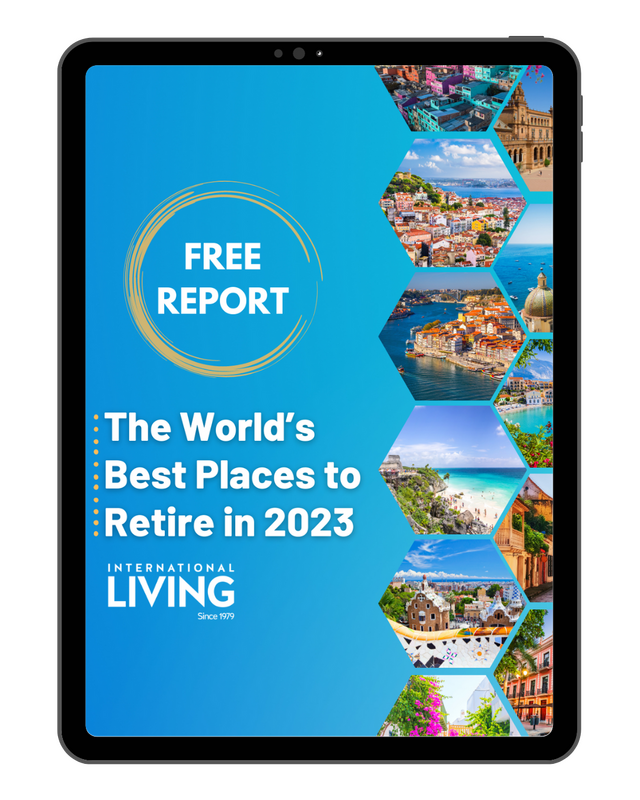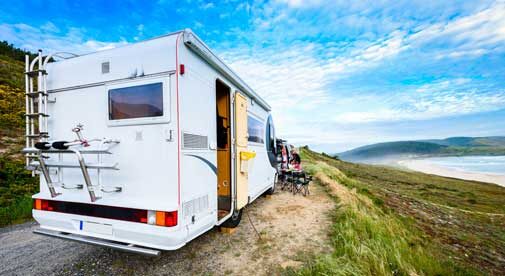Over the past three years, I’ve started my days in locations ranging from the shores of Mexico to the salt flats of Bolivia to the tropical jungles of Ecuador. At night, I’ve fallen asleep to the sound of ocean waves, the barrage of city traffic, and the incredible silence that can only be found at high elevation in the mountains. Throughout all of this, there has been only one constant—my family and the van we call home.
I used to have a normal life. A regular house in a friendly neighborhood. A successful career in management at Google in Silicon Valley. But there was a nagging voice in the back of my mind telling me I needed a change. Big careers come with a lot of stress, and mine was no exception. My day was spent running from problem to problem, barely finding the time to eat. In the evenings, I’d try to focus on my husband and daughter, but always had to keep one eye on my work phone. I lived for the weekends, when I could escape the chaos of our workaday lives.
My husband and I talked endlessly about how to make a change. I’d been dreaming for years about bicycling the length of the Americas. With a 5-year-old daughter, we decided the bike trip would have to wait, but a van could be a great substitute. So my husband bought a 20-year-old van and turned it into a home, working evenings and weekends to install beds, plumbing, and electricity. Meanwhile, I took on the logistics: visas, healthcare, homeschooling, finances. I created spreadsheets to calculate our expenses. We set a date to drive away and stuck to it, intending to leave California behind for 18 months.
Moving into the van was simultaneously thrilling and terrifying. I’ll never forget the first few times we parked in a public area in Mexico to set up camp for the night. My mind was overcome with concerns about our safety, but these quickly faded as day after day we were greeted only with smiles and kindness wherever we went.
We quickly decided we wanted to continue this lifestyle longer term, so we got serious about making ends meet while traveling. We tracked every purchase we made for the first six months, added in one-time costs like health insurance, and calculated our spend at only $25,000 a year. This is what we needed to earn to turn our van adventure into an ongoing proposition.
In the beginning, much of our income came from renting our house in California. The rent covered our mortgage and left about $1,000 a month in spending money. Unfortunately, COVID-19 has since thrown a wrench in this arrangement. Our renters moved out in September because their jobs became remote, and we haven’t found new tenants due to the exodus of workers from Silicon Valley.
Our other source of income is freelancing. I’ve long dreamed of making my living as a writer and have started securing gigs on freelancing platforms such as Upwork. To supplement this, I also work sporadically for a friend in her legal recruiting business, finding people who might be interested in changing jobs and researching firms who are looking for new employees.
My husband was involved in the Silicon Valley startup community before our trip and now advises several emerging businesses on fundraising and product development. He also does consulting calls with companies who want to pick his brain on connected vehicle technology. Our income across these four workstreams is volatile, but it’s enough to meet our needs.
I can work as much or as little as I choose.
What I love most about this lifestyle is that I can work as much or as little as I choose. When we disappeared into the mountains of Peru with limited internet for months, I stopped working entirely. Then, when we rented a house in Ecuador for three months, I worked every day.
Working remotely can be challenging. You have to be prepared to set up your “office” at a moment’s notice and in any location. I’ve spoken to clients from the little table in the back of our van, from the edge of the jungle over the chattering of parrots, and from a bench in a town square, laptop balanced on my knees.
However, the reality is that I can be just as knowledgeable in these locations as in any office in San Francisco. In fact, I enjoy the freedom and adventure this lifestyle provides so much that I’m more determined to deliver quality work.
Our multiyear roaming adventure came to a halt in March when we were visiting Argentina and the country announced a lockdown. Our van is now parked outside our rental house in the small mountain town of Capilla del Monte in central Argentina. Can we return to van life or will COVID-19 make that impossible? At this moment, I’m not quite sure. But the last three years have taught me that a more affordable life overseas can be far simpler and far richer than the traditional nine-to-five grind. Whether it’s living in a van or putting down roots in this small community in Argentina, we’re going to embrace that simplicity.

Get Your Free Report on the World’s Best Places to Retire:
Learn more about the best places in the world to retire in our daily postcard e-letter.
Simply enter your email address below to sign up for our free daily postcards and we’ll also send you a FREE report on The World’s Top 10 Retirement Havens, plus access to over 10 more free reports. Our gift to you, on our favorite destinations.
Related Articles
South America Travel: 1 Month Itinerary
The Best Towns and Cities to Retire in South America
The Cheapest Places in the World to Live
Upcoming Conferences
The Only 2024 Fast Track Panama Conference
If your dream retirement involves stunning beaches… lush green mountains… a warm climate with no hurricanes… first-rate healthcare… incredible value for money (a couple can live well on $2,200 a month)… and the World’s #1 Retiree Discount Program…
Join our Panama experts and expats in February and discover why Panama could be your perfect paradise.


.png)